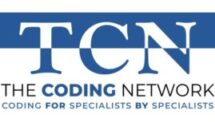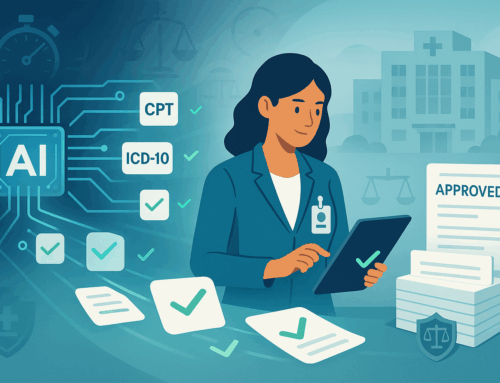In an era where healthcare systems are intricately tied to digital platforms, meticulous coding accuracy cannot be a mere afterthought; it is an absolute necessity. Often overlooked, coding errors are the silent killers of compliance in the healthcare sector. This post delves into the ins and outs of auditing coding compliance. We aim to guide you through potential pitfalls, help uncover deficiencies, and most importantly, offer actionable solutions to fortify you against preventable regulatory nightmares. Buckle up as we embark on a journey of transforming complexities into clarity.
Coding audits are an essential tool for healthcare organizations to identify and resolve coding compliance deficiencies. These audits help identify issues such as inaccurate or outdated codes, fraudulent billing practices, and lack of proper documentation. By conducting regular coding audits, healthcare organizations can improve compliance, reduce fraud risks, optimize revenues, reduce denials and the cost of rebilling, and provide valuable feedback to providers and coders.

Understanding Healthcare Coding Audits
Routine coding audits are an essential process that helps healthcare organizations ensure accurate coding and maintain regulatory compliance. These audits involve a thorough review of medical documentation, procedural-modifier-diagnostic coding accuracy to identify any errors and knowledge gaps. Regular audits can uncover inaccuracies such as outdated codes, inadvertent or fraudulent billing, and reduce the risk of financial losses and potential legal liabilities.
There are two basic types of coding accuracy audits: internal and external.
Internal audits should be conducted by internal teams within the organization on a regular basis. View them as part of the ongoing revenue cycle process. One of your coders or the coding supervisor should review a sample of the work of other staff coders. Any identified errors should be looked at as learning opportunities, and should be thoroughly reviewed by the original coder.
A shortcoming of internal audits is what we call the “four walls syndrome.” The coding definitions, edits, rules, and regulations change regularly. Without an outsiders “over the shoulder” review, any misunderstanding of the codes that can result in undervaluing a service or “upcoding” or medical record deficiencies can become institutionalized and go unnoticed. The only way this can be avoided is by having regular specialty-specific outside coding audits.
The purpose of outside audits is to obtain an unbiased independent evaluation of the provider’s coding and to ensure its accuracy and compliance with current laws, rules, and regulations. Only an independent review can serve to identify errors and misconceptions regarding coding, as well as ensure that coding regulatory updates (i.e., new/modified codes, coding edits, bundling rules, etc.) are being incorporated into the provider’s coding. Outside feedback is essential to prevent errors from becoming institutionalized.
CMS has retained independent companies to review the accuracy of claims on a contingency percentage, or bounty hunter basis. The stakes are high, making it incumbent upon each-and-every provider to ensure that regular arms-length independent audits are performed to keep their coding accurate. A program of regular independent outside coding audits demonstrates that reasonable steps are being taken to ensure compliance. In the event of an OIG/RAC/ZPIC/SIU audit, having an arms-length independent coding evaluation helps prevent and reduce potential legal and financial compliance exposure. Importantly, the results of independent coding reviews can be utilized as a meaningful teaching tool for the healthcare providers and coding staff.
Accuracy in coding does not solely mean the reduction of compliance exposure. An equally important result of an independent coding review is the identification of opportunities to optimize reimbursement. Coding errors and misconceptions can also result in lost charges and undervalued services. Without outside peer reviews, errors, along with whatever else the coder does not know become institutionalized and can be extremely costly in terms of lost charges and reimbursement over time. No payer will ever send payment for more than was billed because they identified an omitted code. Our audits address this by identifying missed charges and undervalued services.
The codes on a claim must depend upon and be supported by the medical record. The provider’s notes are the legal source documents. An integral component of our coding accuracy audits is to identify any documentation deficiencies or discrepancies in the physicians’ reports that we observe.
TCN’s Audit Experience
Auditing the accuracy of coding done by others has been a TCN specialty since its inception in 1995. Auditing requires a different set of analytic skills, so we require all of our auditors to have a minimum of at least five years of single-specialty coding experience; most have much more. Many are nationally recognized coding experts who have authored articles and delivered presentations at national conferences. Quite a few are Registered Nurses, Physician Assistants, or have other clinical credentials. We provide independent audit services to many private and academic practices, hospitals, and we supplement a number of Compliance Offices with our specialty-specific auditors. This allows your on-site compliance staff to focus on provider explanation and training based on our specialty-specific findings. We have unparalleled experience working with providers, internal auditors, and coders at academic medical centers and practice plans.
Audit Frequency
The OIG and CMS recommend regular reviews, but give no guidance as to frequency. We suggest that our clients establish an annual budgetary amount, and then stagger it in quarterly or monthly segments instead of one large annual evaluation. The cost is the same and has four major benefits. First, the cost of the audit is spread throughout the year. Second, providers and coders receive feedback on the status of the coding throughout the year. Third, regular quarterly feedback provides an opportunity to correct the errors identified and then confirm that the corrective action has been effective without waiting an entire year. The fourth is it facilitates our prompt turnaround of freshly meaningful information by allowing your compliance staff and our auditors to plan their workload in advance rather than have a huge one-time project looming over them.
Audit Sample Type and Size
We can do either prospective (prior to billing) or retrospective (post-billing) audits. Prospective audits allow the providers the opportunity to correct any coding errors we uncover prior to submitting the claim forms. If the reviews are retrospective and if we identify any coding errors that have the potential to create compliance exposure, then the practice is obligated to self-report (and submit corrected claims and refunds) to Medicare and Medicaid. The primary disadvantage of a prospective evaluation is that it delays the billing of those services being evaluated by the time it takes us to complete the review, but staggering the reviews throughout the year significantly reduces any cash-flow irregularities. Our clients decide which works best for them.
The OIG’s model compliance plan gives each provider responsibility to determine the size of the sample. The sample should be large enough to be considered representative of the practice. We generally suggest that ten E&M encounters per coder (or self-coding physician) is reasonable; but if an individual coder codes for physicians practicing in more than one specialty or for some high-volume specialties (i.e., emergency medicine, primary care, hospitalists, surgical pathology, etc.) or for multimodality services (i.e., diagnostic radiology that includes radiography, CT, MRI, mammography, ultrasound, etc.) then we suggest ten encounters per specialty or modality. Surgeons and other proceduralists who code for themselves need to have separate samples of their operations as well as their E&M services evaluated. This structure will give a good indication if remediation or additional targeted auditing is necessary. The samples can be risk curated to focus on those services on the OIG’s current work plan.
The need for any corrective action or additional investigation will become immediately apparent. You will be able to develop and institute a targeted remediation program based upon our findings. This might include additional and advanced training in specific areas of weakness, documentation reviews with physicians, and targeted “probe” audits with greater sample sizes or frequencies for certain physicians or coders to provide more feedback and to measure improvement.
Audit Workflow Process and Deliverables
The process is simple. All of our audit work is done remotely. A TCN Project Manager is assigned to each client. S/he will be your single touchpoint to access all of TCN’s resources. We will start with a teleconference to discuss the overall audit process. We will jointly complete a TCN Client Profile for each specialty to identify your practice’s or hospital’s specific internal and discretionary coding guidelines that each auditor will use as a reference when performing the audit.
Our specialty-specific auditors will read every word of the provider’s visit note or procedure report and then code each service, and then prepare an individual case-by-case coding analysis that compares the providers procedural coding, modifiers, and diagnostic coding to TCN’s coding of the same elements. Any errors or coding differences will be briefly described. Areas of focus auditing include:
- Incorrect code selection,
- Unbundling,
- Missed billing opportunities,
- Services that were billed but not done or not supported by the medical record documentation,
- Correct modifier application,
- Accurate ICD-10 diagnostic coding to support the medical necessity of the service,
- Observed medical documentation deficiencies or discrepancies,
- Valuation differences measured in Relative Value Units (RVU’s.)
We prepare a detailed encounter worksheet that explains the errors we’ve identified in plain English. This becomes the basis for our high level “report card” of our audit findings for each coder. It quantifies the total number of identified errors categorized as either compliance issues versus revenue issues, clean claim ratio, potential lost revenue based on the current Medicare conversion factor, and the accuracy rates of the separate CPT and diagnostic coding components. We also prepare a detailed summary of our findings in Excel so each client’s leadership can create their own unique and specific reports.
Our reporting format details our findings on each encounter or operation and has proven ideal for distribution to physicians, MLP’s, and coders. It is designed to be an educational tool.
Our audit turnaround time depends upon the specifics of the number of providers we audit at once, how the source documents are made available to TCN, the sample size, the EMR work queue structure, and possibly other factors; completion usually takes about four weeks.
Many of our competitors measure accuracy using different errors weights or point values to types of coding errors. This allows the development of splashy tables and graphs that have little use in changing erroneous coding behaviors. In fact, we have seen some of their error weighting calculations give a false sense of coding compliance. Instead, we focus on whether each CPT code, modifier, or ICD-10 code was right or wrong and why.







